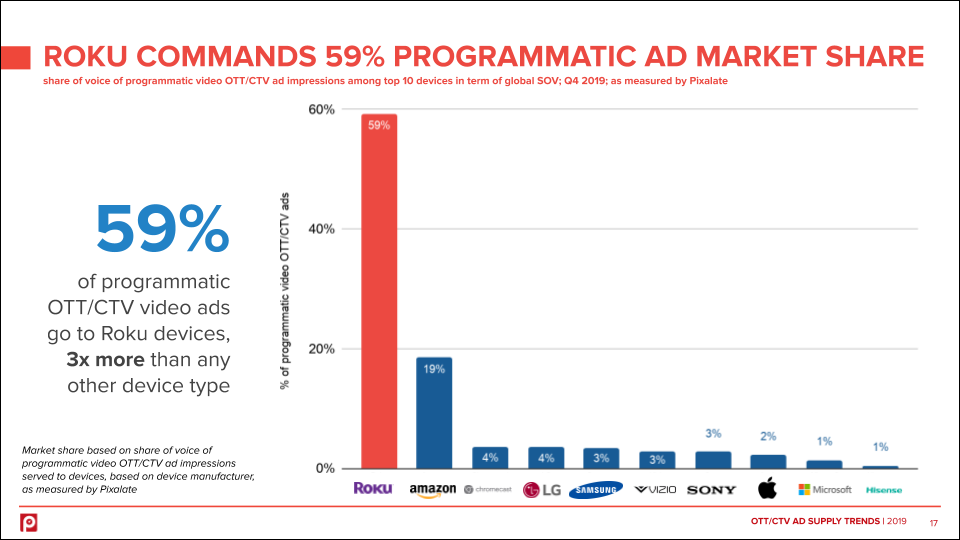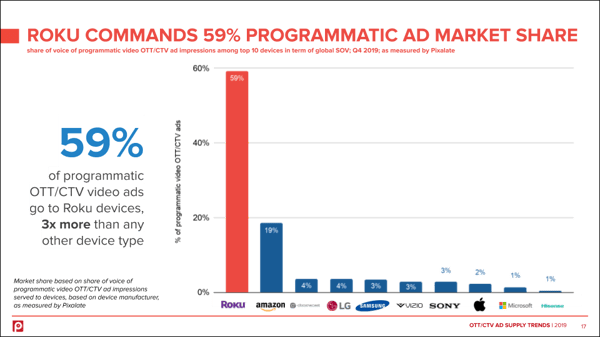
Roku remains the dominant device type in the surging Connected TV/OTT ecosystem. According to data in Pixalate's State of Connected TV/OTT: 2019 Ad Supply Trends Report, what are the top 10 device types for programmatic OTT/CTV advertising?

In 2019, 59% of all programmatic OTT/CTV video advertisements went to Roku devices. In fact, Roku has over 3x the market share compared to any other OTT/CTV device type.
Here are the top five device types in terms of 2019 market share:
"Market share" is based on the share of voice of programmatic video OTT/CTV ad impressions served to devices, based on device manufacturer, as measured by Pixalate.
The number of global OTT/CTV apps that support programmatic advertising has increased 232% over the last 18 months, including a 139% rise in the number of all apps in the Roku Channel Store since the start of 2018.
Download a free copy of Pixalate's State of Connected TV/OTT: 2019 Ad Supply Trends Report to learn more.
What's in Pixalate's 2019 OTT/CTV programmatic advertising supply trends report:
Some data points that can be found in the report include:
Disclaimer
The content of this post, and the State of Connected TV/OTT: 2019 Ad Supply Trends Report, reflect Pixalate’s opinions with respect to the factors that Pixalate believes can be useful to the digital media industry. Any proprietary data shared is grounded in Pixalate’s proprietary technology and analytics, which Pixalate is continuously evaluating and updating. Any references to outside sources should not be construed as endorsements. Pixalate’s opinions are just that, opinions, which means that they are neither facts nor guarantees.
*By entering your email address and clicking Subscribe, you are agreeing to our Terms of Use and Privacy Policy.
These Stories on CTV
*By entering your email address and clicking Subscribe, you are agreeing to our Terms of Use and Privacy Policy.

Disclaimer: The content of this page reflects Pixalate’s opinions with respect to the factors that Pixalate believes can be useful to the digital media industry. Any proprietary data shared is grounded in Pixalate’s proprietary technology and analytics, which Pixalate is continuously evaluating and updating. Any references to outside sources should not be construed as endorsements. Pixalate’s opinions are just that - opinion, not facts or guarantees.
Per the MRC, “'Fraud' is not intended to represent fraud as defined in various laws, statutes and ordinances or as conventionally used in U.S. Court or other legal proceedings, but rather a custom definition strictly for advertising measurement purposes. Also per the MRC, “‘Invalid Traffic’ is defined generally as traffic that does not meet certain ad serving quality or completeness criteria, or otherwise does not represent legitimate ad traffic that should be included in measurement counts. Among the reasons why ad traffic may be deemed invalid is it is a result of non-human traffic (spiders, bots, etc.), or activity designed to produce fraudulent traffic.”

